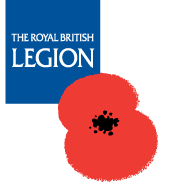

Horses were heavily used in World War One.
Horses were involved in the war's first military conflict involving
Great Britain - a cavalry attack near Mons in August 1914. Horses were
primarily to be used as a form of transport during the war.
When the war broke out in Western Europe in August 1914, both Britain
and Germany had a cavalry force that each numbered about 100,000 men.
Such a number of men would have needed a significant number of horses
but probably all senior military personnel at this time believed in the
supremacy of the cavalry attack. In August 1914, no-one could have
contemplated the horrors of trench warfare - hence why the cavalry
regiments reigned supreme. In fact, in Great Britain the cavalry
regiments would have been seen as the senior regiments in the British
Army, along with the Guards regiments, and very many senior army
positions were held by cavalry officers.
However, the cavalry charge seen near Mons was practically the last seen
in the war. Trench warfare made such charges not only impractical but
impossible. A cavalry charge was essentially from a bygone military era
and machine guns, trench complexes and barbed wire made such charges all
but impossible. However, some cavalry charges did occur despite the
obvious reasons as to why they should not. In March 1918, the British
launched a cavalry charge at the Germans. By the Spring of 1918, the war
had become more fluid but despite this, out of 150 horses used in the
charge only 4 survived. The rest were cut down by German machine gun
fire.
However, though a cavalry charge was no longer a viable military tactic,
horses were still invaluable as a way of transporting materials to the
front. Military vehicles, as with any mechanised vehicles of the time,
were relatively new inventions and prone to problems. Horses, along with
mules, were reliable forms of transport and compared to a lorry needed
little upkeep.
Such was the use of horses on the Western Front, that over 8 million
died on all sides fighting in the war. Two and a half million horses
were treated in veterinary hospitals with about two million being
sufficiently cured that they could return to duty.
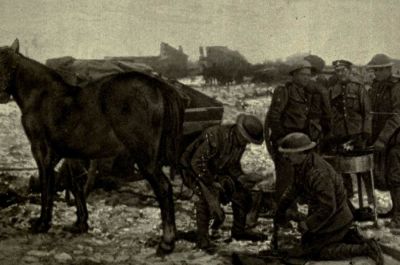
British Cavalrymen Shoeing Horses
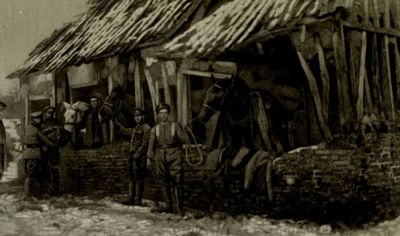
British Cavalry
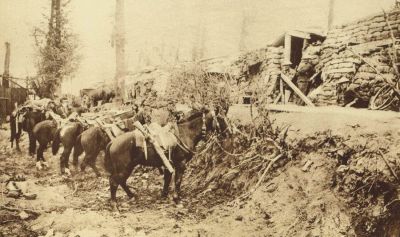
British Cavalry Tethered Behind Dugouts
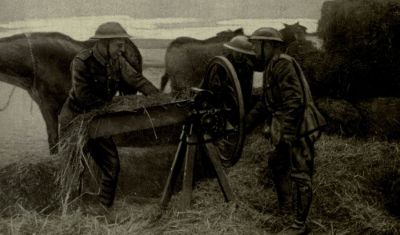
British Cavalrymen Cutting Fodder
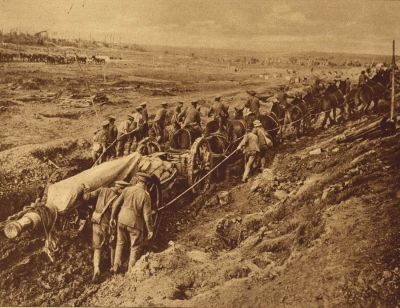
Horses Pulling Artillery
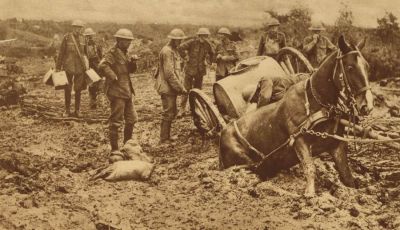
British Supply Horse Stuck in Mud
The British Army also purchased a large number of mules from the USA. The mule has amazing stamina and endured the terrible conditions in the front-line better than the horse. At the end of the war the army owned 213,300 mules.
Finding enough food for the horses and mules at the Western Front was a constant problem. The daily ration for a horse was 20 lbs of grain a day. This was nearly 25% below what a horse would be fed in Britain. The horses were always hungry and where often seen trying to eat wagon wheels. When grain was in short supply, the army fed their horses and mules on sawdust cake.
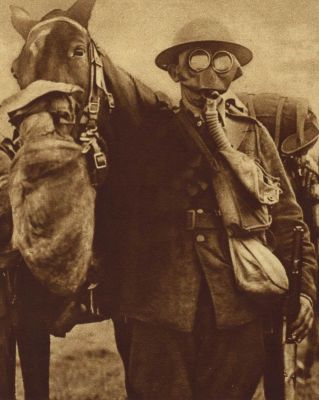
British Soldier and Horse Wearing Gas Masks
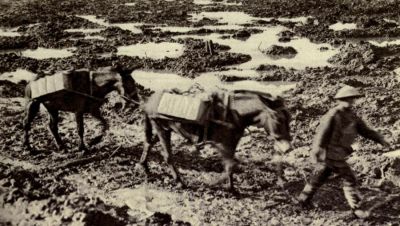
British Mule Team Crossing a Muddy Battlefield
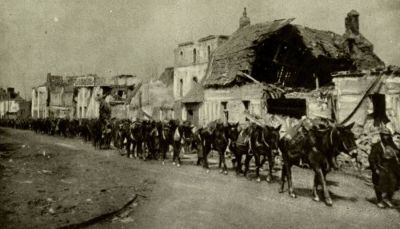
British Mule Train Headed for The Front
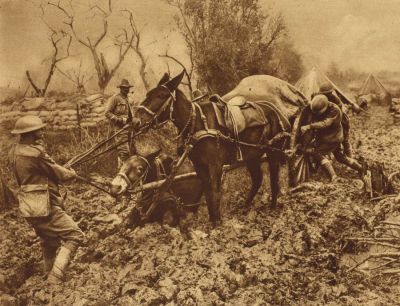
British Mule Team Sunk in Mud